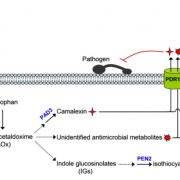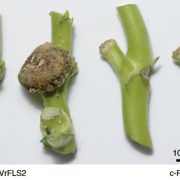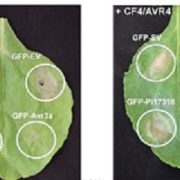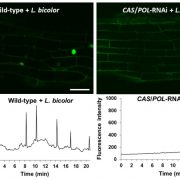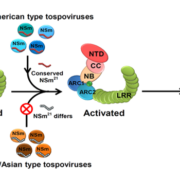Mechanism of rice blast fungus recognition revealed
Rice is an important food crop in China, but the damage of rice blast fungus is an important factor affecting the high and stable yield of rice. Liu Jun’s research group of the Institute of Microbiology, Chinese Academy of Sciences found in the previous study that when rice blast fungus infects rice, it can secrete many proteins into the apoplast of rice. The recognition of pathogens by plants mainly exists at two levels, the recognition of PAMPs (PTI, PAMP triggered immunity) and the recognition of pathogenic factors (ETI , Effector triggered immunity). The receptors that recognize PAMPs are essentially distributed on the cell membrane of plants. Therefore, proteins secreted during the infection of Magnaporthe oryzae may be recognized by receptors distributed on the rice cell membrane.
Through the isolation and transgenic analysis of the secreted proteins of Magnaporthe oryzae, the research team found that a secreted protein, MoChia1, can strongly activate the immune response of rice and has the typical characteristics of PAMPs. MoChia1 is a chitinase that is widely present in fungi and is involved in cell wall modification of fungi. MoChia1 is able to activate the immune response of rice, indicating the presence of a receptor that recognizes MoChia1 in rice. Further analysis revealed that MoChia1 binds to chitin and inhibits the immune response of chitin activation in rice cells. By yeast two-hybrid screening, it was found that the protein OsTPR1 on rice plasma membrane could bind to MoChia1, thereby allowing the accumulation of free chitin and re-establishing the immune response. The study found an important extracellular immune mechanism of plants, and proposed that some proteins in plants can be used as bait to interfere with the inhibition of plant immunity by pathogens.
The research results have been published online in The Plant Cell, an international journal of botany. Liu Jun’s research group had Yang Chao and Yu Yongqi as the co-first authors of the article. Liu Jun is the author of the communication.
The research was funded by the Chinese Academy of Sciences’ Strategic Pilot Science and Technology Project, the Startup Fund for the Hundred Talents Program , and the National Natural Science Foundation.
Article refernce and link: Yang, C., Yu, Y., Huang, J., Meng, F., Pang, J., Zhao, Q., Islam, A., Xu, N., Tian, Y., and Liu , J. (2019). TPR1 binds fungal chitinase to enhance resistance. Plant Cell 10.1105/tpc.18.00382

Figure : Molecular mechanism of rice recognition of the secreted protein of Magnaporthe oryzae. A. The rice blast fungus protein MoChia1 can activate ROS burst; B. and C.Rice protein OsTPR1 competes with chitin for binding to MoChia1; D. MoChia1 inhibits chitin- activated rice immune response, but OsTPR1 can prevent the inhibitory effect of MoChia1; Working model: MoChia1 inhibits chitin-activated plant immunity, but OsTPR1 prevents its inhibitory effect, and there is a receptor for recognition of MoChia1 in rice.


